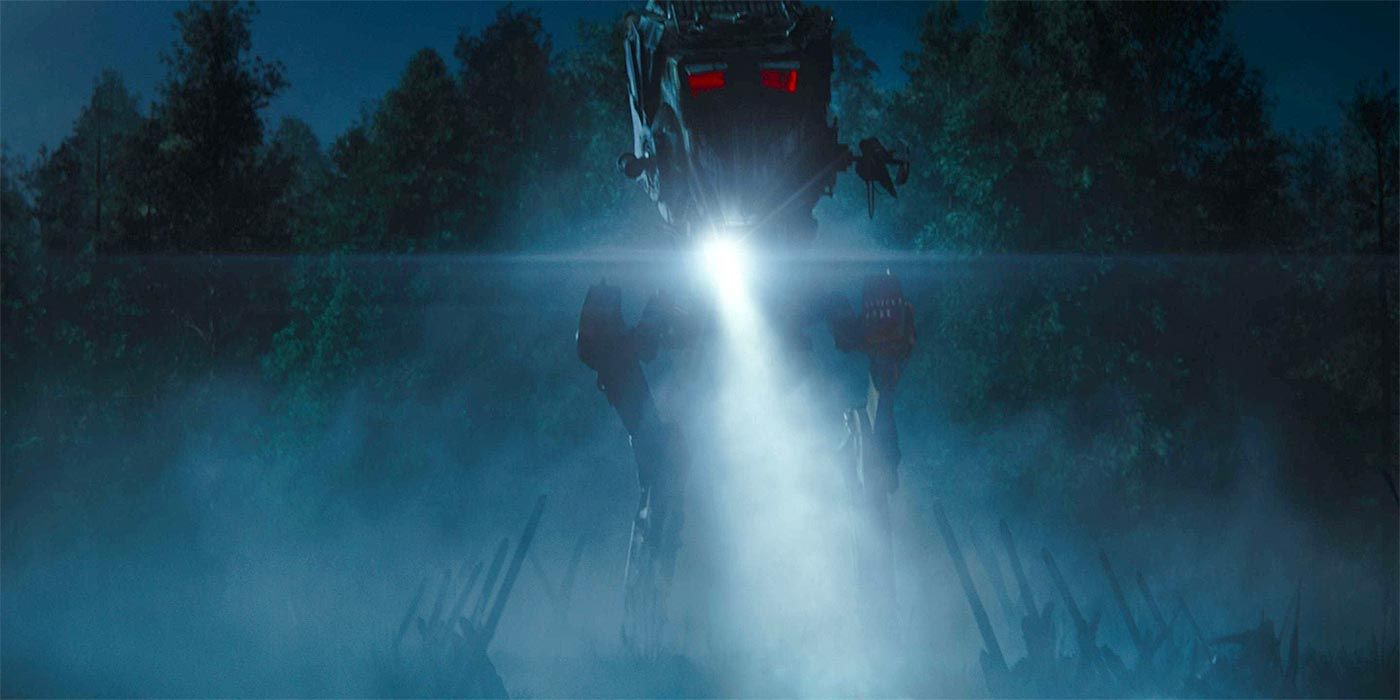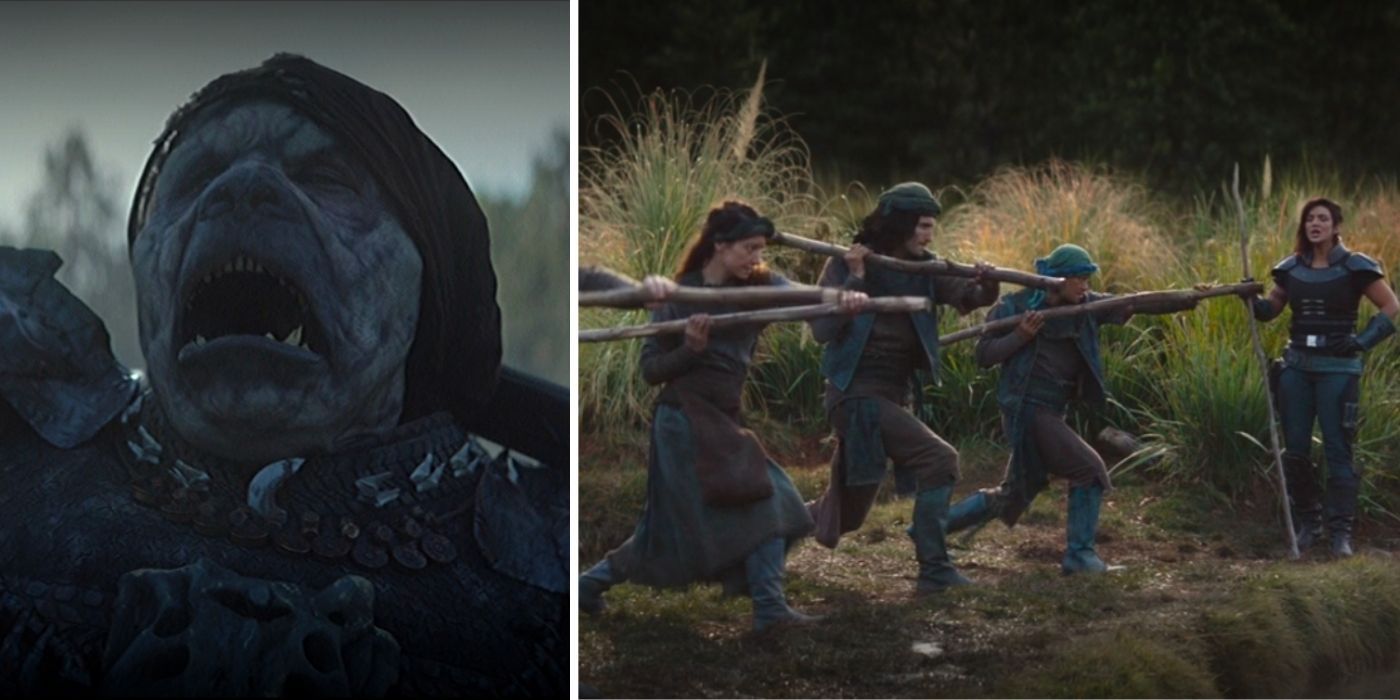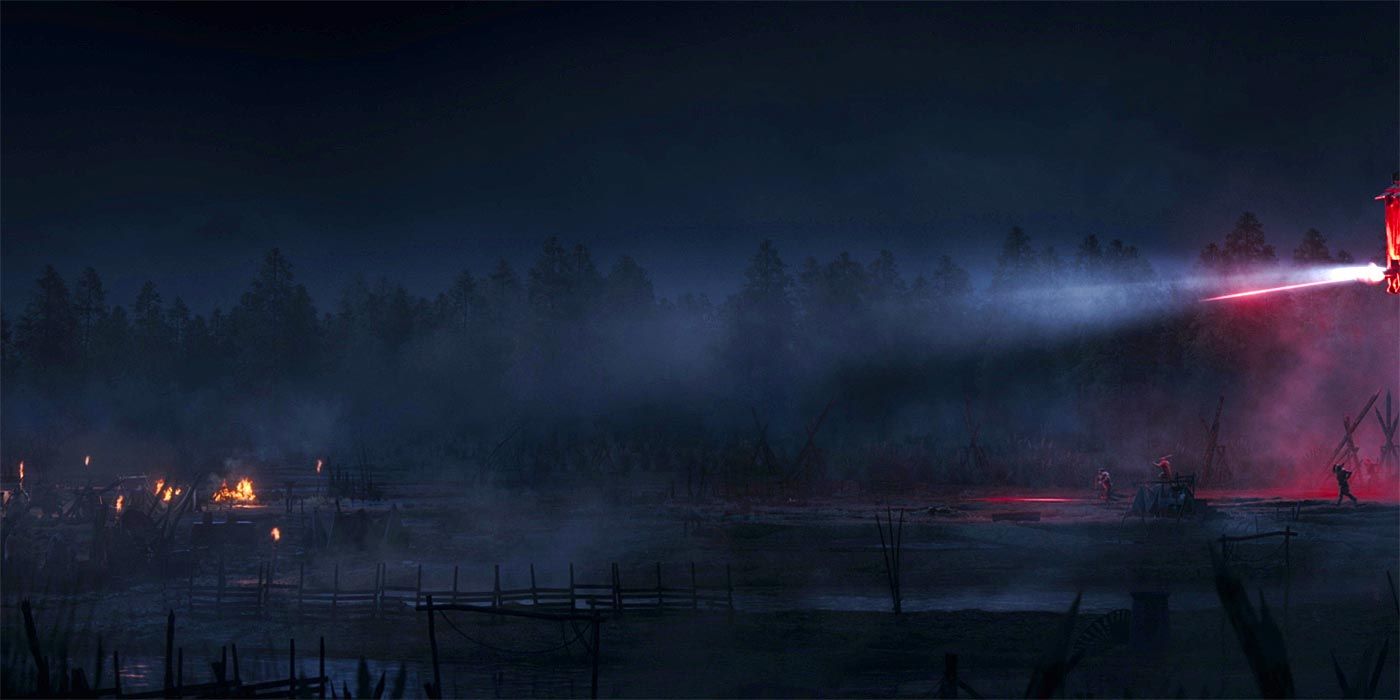WARNING: The following contains spoilers for The Mandalorian Chapter 4, "Sanctuary," streaming now on Disney+.
The Imperial AT-ST walker was seen briefly in Star Wars: The Empire Strikes Back before playing a more prominent role in the Battle of Endor in Return of the Jedi. But even then, the so-called "chicken walkers" were brought down by the adorable Ewoks and piloted by Chewbacca as the Rebels turned the tables on the Imperial forces.
Despite appearances in Star Wars Rebels and Rogue One, the two-legged walker has never been viewed as all that formidable -- compared to the X-wings and TIE-fighters, the AT-ST was clumsy and impractical. Just like their big brothers, the AT-ATs, they looked like they could be tripped up by a couple of strategically placed cables, and piloted by a novice. All of that changes with the fourth episode of The Mandalorian, which makes the AT-ST a terrifying force to be reckoned with, and a surprisingly effective weapon even in the hands of unskilled raiders.
In "Sanctuary," Mando (Pedro Pascal) finds a backwater planet on which to lay low with Baby Yoda, only to cross paths with Cara Dune (Gina Carano), a former Rebel shock trooper with similar ideas. They're soon hired by krill farmers in a remote village that's subjected to repeated pillaging by raiders. Mando and Cara accept the job, thinking they can barter their protection services for food and lodging -- that is, until they discover the raiders have their own Imperial AT-ST, prompting them to recommend their clients to pack up and move. The villagers don't know what an AT-ST is, so Cara explains: "The armored walker with two enormous guns that you knew about and didn't tell us."
Of course, the villagers don't move; those krill ponds were seeded by their ancestors. So what follows is a charming training sequence reminiscent of The Seven Samurai, in which Cara and Mando ensure that the villagers are minimally prepared for the battle that will follow.
"There's nothing on this planet that can damage the legs of this thing," explains Cara, who has seen AT-ST take out entire battalions in seconds. "So, we're going to set a trap." The plan is to lure the raiders and the death machine into a hole in the ground, the only way to destabilize chicken legs.
RELATED: The Mandalorian Makes Amends For a Classic Star Wars Plot Hole
Even that proves difficult, because the AT-ST driver has no reason to go further than the border of the village. His guns have significant range, allowing the walker to set fire to every house and wreak havoc in the krill ponds. The "head," or cabin, also possesses significant range of movement, which, combined with its powerful headlights, provides enough visibility to the AT-ST to unleash hell from a single spot.
That means the only way to bait the vehicle to move is to get in its blind spot, right under its head, and pester it from there, which is what Cara does. Using Mando's modified Amban sniper rifle, she takes out one of the windows of the AT-ST, forcing it to tilt into the excavated pond to try to aim at her, where it falls.
Although this episode has a happy ending, its implications are quite dark. If the remnants of the Empire, and its equipment, are so promptly commandeered by warlords all across the galaxy, and used to terrify defenseless people in planets too far from the New Republic, is it really a surprise that the First Order was able to ascend in the 30 years following the Battle of Endor? Just like the rusty Stormtroopers from the first and third episodes of The Mandalorian, the fact that the Empire is gone does not mean that its tools of oppression have disappeared.



